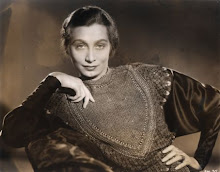 The Mystery of Edwin Drood: the book
The Mystery of Edwin Drood: the bookIn 1870, Charles Dickens lay dead;
The Mystery of Edwin Drood unfinished. The secret of Edwin Drood had died with Dickens. The incomplete book on Drood was published posthumously. And "the most intricate literary problem in the English language" required a solution.
So it came to pass that a divergent group of scholars set about pondering the puzzle of Dickens's last plot. And for 140 years thereafter, scholars have discussed the deviltry or devotion of John Jasper, the identity of Dick Datchery, and the fate of Edwin Drood.
If, as we were taught in our early Latin classes, “All Gaul is divided into three parts;” then all Charles Dickens likely divides more-so. And within those divisions, that which relates to Drood is particularly susceptible to sub-sectioning. There are Dickensians, and among them Droodians or Droodists, or Drood-hunters, or as Chesterton was wont to call them: Druids. And within this sect there are Bazzardites, Landlessites and Tartarites, among others; the latter a minor sect we're told.
Those scholars were a boon to the Dickens fellowship, to the publishing industry, and to book collectors who extended a branch of the Dickensian tree to one of rather lengthy proportion. And so went this literary game for some sixty years until the Great Depression, when scholarly concentration on the criminous occurrence in the shadow of the cathedral appeared to ebb.
Yet evidence of the quest still surfaced occasionally and, in the heart of that Depression, in 1935, Universal Pictures produced a film version titled
Mystery of Edwin Drood, directed by Stuart Walker. I remembered seeing the film on television long along but details had faded from memory.
 Mystery of Edwin Drood: the film
Mystery of Edwin Drood: the filmI was reminded of the 1935 version this week as I came across Heather Angel playing a maid in Alfred Hitchcock’s
Suspicion. In
Mystery of Edwin Drood, she plays Rosa Bud. The next day, I sought and watched the film on
You Tube. Claude Rains stars as John Jasper and Valerie Hobson as Helena Landless. (In an early scene, Rosa Bud tells Helena Landless to call her "Rosebud” -- which I mention for those film purists inclined to stray off subject.)
Douglass Montgomery plays Neville Landless and David Manners is Edwin, called Ned. A fine sampling of Dickensian types supports, such as a reasonably slim Francis L. Sullivan, Walter Kingsford, and Forrester Harvey as Durdles. Oddly, as if escaped from some wagon train gone far astray, there are brief appearances by Walter Brennan and Will Geer.
The single propeller plane flies around the globe and the Universal Pictures logo lets us know we are in for Universal Studio atmospherics. From an opium den in London we move to the County of Kent, within which lies the cathedral town of Cloisterham (nee Rochester). European sets, more often reserved for vampires and other creatures of the night, serve as the mews, closes, and alleys surrounding the English cathedral. A perfect setting for a mid-Victorian malfeasance. And all because of “Rosebud.”
Three men are involved in the affections of one girl. One kills, and another dies, leaving the third to marry. There is an abundance of cobblestoned streets, church steeples, bells, tombs, crypts, graveyards and bedposts, that in dreams, morph into church spires. And the villagers gossip and suspect the wrong fellow for a while, but they are not the usual rambunctious European contingent with torches -- the English being masters of good form.
John Jasper is the obvious dispatcher of Edwin Drood, who sleeps with the quicklime. And the tempestuous Neville Landless’s return from Ceylon is rewarded as those cathedral bells ring. The film is a moody piece as was the unfinished original novel. The cast, and the source, and the Universal Studios look make the trip to Cloisterham in Kent worthwhile.
An afterthought on You TubeYou Tube is often the court of last resort. I recently purchased a 26 inch personal computer monitor for just such contingency (and for
Netflix downloads). As of November 23,
You Tube had the
complete film in six sections and I watched it immediately. (One must do so with scarce materials in that environment.) Alas, the second half of the film has
You Tube synchronization problems. But one suspects Claude Rains out of sync is clearer to the ear than most anyone else then, or now.
And an afterthought on wagon trains going astrayMy friend Bob Wyatt of Wokingham once showed me the place where the
Buffalo Bill Wild West Show played in Wokingham (Berkshire) but that was some thirty five years after poor Edwin went to rest in the quicklime. The show also played in Chatham, near Rochester, on August 28, 1903.






























